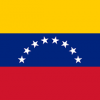Good Morning
I have a question about the drainage line of a pump, the one that goes to open drainage or closed. How much is de flow that I should consider to dimension this drainage line????? 20% of de design flow of the pump?
Im adding an image of what I mean.
Thank you for your answers
Vanessa

 FB
FB














